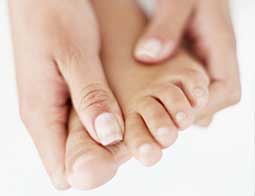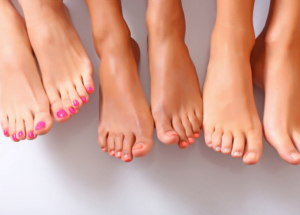Foot Pain and the Role of the Tight Calf Muscle
There are many reasons why the forefoot can become painful. The more common ones can be linked to modern lifestyle. Inappropriate footwear, sedentary working life or excessive impact activities are just a few of them. On the other hand, pathologies “higher up” in the body can contribute to foot and ankle problems. In particular, the gastrocnemius muscle, which spans over three joints (the knee, the ankle and the subtalar joint) plays an important role and can be linked to many foot and ankle pathologies.


High heeled shoes and prolonged periods of sitting at a desk reduce the flexibility of the gastrocnemius muscle. Most often a genetic predisposition is responsible for the reduced so called “dorsiflexion” of the ankle/foot. This means, the patient has no problems putting pressure through the foot and pressing it downwards but does not have enough movement “upwards” which can lead to many problems.
It is generally recognised that a tight calf muscle (which in most cases is a tight gastrocnemius) may contribute to Achilles tendinopathies and plantar fasciitis but it is less well known that the calf tightness can be linked to forefoot pathologies.
The tightness of the gastrocnemius muscle may lead to an overload of the forefoot and can cause capsulitis (inflammation of the MTP joints) which is often referred to as metatarsalgia. Pain in the big toe joint, hallux valgus and hallux rigidus, hammer toe deformities, rupture of the plantar plate, stress fractures and in diabetics, forefoot ulcers can also be the result of the tight calf muscle. In order to prevent these problems, knowledge on how to test and how to treat is crucial. Assessment is made by gentle passive dorsiflexion of the ankle joint with the knee bent and extended (Silverskjold test). With the knee extended, the foot should dorsiflex 10 degrees and with the knee bent dorsiflexion should improve at least another 10 degrees.
When there is less dorsiflexion, a dedicated stretching program should be initiated. The associated forefoot problem (but also the plantar fasciitis and Achilles tendinopathy) should improve with time. In addition, footwear adjustments will help further.
Only those few patients that do not improve over time may benefit from surgery which means a portion of the “aponeurosis” of the tight calf muscle is released.
This operation can be done as a day case and will not need any immobilisation but just a few days of rest. It is very successful and associated with a high patient satisfaction rate.




